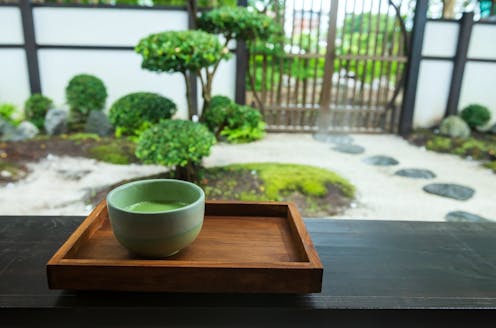Soaked in sake and maples, Muriel Barbery’s One Hour of Fervour offers a cliched view of Japan
- Written by Véronique Duché, A.R. Chisholm Professor of French, The University of Melbourne

French bestselling author Muriel Barbery’s sixth opus, One Hour of Fervour, is a contemplative novel, a poetic travelogue and a homage to Japan. We follow Haru Ueno, a successful Japanese art dealer, whose life is turned upside down the day his French mistress forbids him from raising his child.
Review: One Hour of Fervour – Muriel Barbery (Gallic Books)
Tea ceremony, temples, sake, kabuki: Barbery transports us to an exotic Kyoto with her precise prose including haikus as well as aphoristic Japanese tales. Unknown words abound (shakuhachi, fūrin, matstutake), creating an ambience, and Haru’s philosophical thoughts are interspersed throughout the story.
The book, translated by Alison Anderson, begins with the end of the story, when 67-year-old Haru is about to die. He reflects on the three threads in his life: art, friendship, and Rose, his estranged daughter.
Then we go back 50 years, to the 1970s, following the young Haru as he develops his eye for art and his “predilection for Western women”. His life is regulated like a metronome, between his work as a successful art dealer, his visits to his friends Keisuke and Tomoo, and his weekly walk to Shinnyo-dō, a temple perched on a hill in the northeast of Kyoto, where “at every instant, he would know this was his home”.
His social network expands when he meets Jacques Meilland, a Parisian antique dealer who specialises in Asian art, and then Paul Delvaux, a young Belgian who becomes his assistant. Haru has a string of female conquests, including Maud, the mysterious French woman who will bear his child but deny him the role of being a father.
A profound joy
The novel is divided in six parts, contrasting time and place, and emphasising the radical change that takes place in Haru’s life when he accidentally learns he has fathered a child. At a distance and in secret, from that moment on, his life will revolve around his daughter.





